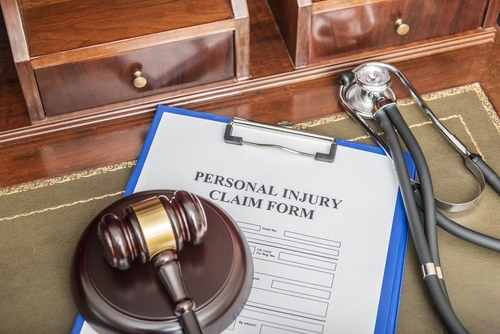An accident can change everything in the blink of an eye. Whether it’s a car crash caused by a distracted driver, a slip and fall on someone else’s property, or a serious dog bite, the physical, emotional, and financial toll can seem insurmountable. In these moments, a Long Island personal injury lawyer can help you understand your rights and the steps you can take to seek justice.
If you or a loved one has been injured in New York due to someone else’s negligence, filing a personal injury claim can help you recover compensation for your losses. Here’s an overview of what to expect, what’s required, and how to protect your rights throughout the personal injury claims process.
For a free legal consultation, call 516-451-7900
What Is a Personal Injury Claim?

A personal injury claim is a legal process where an injured person seeks compensation from the party responsible for their injury. These claims typically arise from accidents such as:
- Motor vehicle accidents
- Bicycle and pedestrian accidents
- Slip and fall incidents
- Construction site injuries
- Dog bites
- Medical malpractice
- Product liability
In New York, the injured party must prove that the defendant (the person or entity responsible) acted negligently or wrongfully and that this conduct caused the injury. How to choose a personal injury lawyer starts with finding someone who understands these legal standards and has a strong track record of building compelling cases based on clear evidence.
Step 1: Seek Medical Treatment Immediately
Your health and safety come first. Even if you think your injuries are minor, always seek medical attention as soon as possible after an accident. Some injuries, like whiplash or internal trauma, may not present symptoms right away but can worsen without timely care.
Medical records also serve as key evidence in a personal injury claim. They help establish the extent of your injuries, the treatment required, and the connection between the accident and your physical condition.
Seeking medical care after an accident is important, as delays in treatment can weaken your claim and give insurance companies a reason to argue that your injuries weren’t serious, or weren’t caused by the accident at all.
Step 2: Report the Incident
Depending on the type of accident, it’s important to file a report:
- Car accident: Call 911 and file a police report. This report will include crucial information like driver details, witness statements, and traffic camera documentation.
- Slip and fall: Notify the property owner or manager and request a written incident report.
- Dog bite: Report the incident to your local health department and animal control.
- Workplace injury: Notify your employer right away and follow the necessary workers’ compensation procedures.
Prompt reporting ensures the event is officially documented, which can help support your version of events later on. How long do I have to report an accident depends on the type of incident, but delays can weaken your case or even prevent you from filing altogether.
Step 3: Gather Evidence
The strength of a personal injury claim depends heavily on the quality of evidence. The more documentation you can provide, the stronger your case. Be sure to collect:
- Photos of the accident scene, injuries, vehicles, or hazards involved
- Witness contact information and statements
- Surveillance or traffic camera footage, if available
- Medical bills
- Proof of lost income (such as pay stubs or employer letters)
- A written account of how the injury has impacted your life
If you are unable to collect this information yourself due to your injuries, a loved one or an attorney can help gather it on your behalf.
Step 4: Understand New York’s Personal Injury Laws
New York has specific rules and deadlines when it comes to filing personal injury claims. How does a personal injury lawsuit work depends on the type of case, but understanding the process helps ensure you take the right steps and avoid losing your right to pursue compensation.
Statute of Limitations
In general, the deadline to file a personal injury lawsuit in New York is three years from the date of the accident. However, there are exceptions:
- Wrongful death: Two years from the date of death (even if caused by medical malpractice)
- Claims against a municipality (like the City of New York): A notice of claim must be filed within 90 days of the incident, and the lawsuit must be started within one year and 90 days from the date of the incident
Missing these deadlines can result in your claim being dismissed, no matter how strong your case is.
Comparative Negligence
New York follows a pure comparative negligence rule. This means that even if you were partially at fault for your accident, you can still recover damages. However, your compensation will be reduced in proportion to your share of the blame.
For example, if you were found 20% responsible for a car crash and your damages totaled $100,000, you could still recover $80,000.
Step 5: Notify the At-Fault Party’s Insurance Company
After collecting evidence and understanding your legal rights, the next step is to notify the at-fault party’s insurance carrier. This insurance claim should be made as soon as possible and should include basic information about the incident.
Be cautious when communicating with insurance companies. They may seem friendly, but their goal is to minimize what they pay out. Do insurance companies pay fairly? Often, they aim to reduce or deny claims, so avoid giving recorded statements or signing anything without first speaking with a legal professional.
Insurance adjusters may attempt to:
- Downplay the severity of your injuries
- Shift blame onto you
- Pressure you into a quick, lowball settlement offer
- Take your words out of context to try to minimize your claim
You are not obligated to accept any offer or make a formal statement until you are ready and informed.
Step 6: Consider the Types of Damages You Can Pursue
When filing a personal injury claim in New York, you may be entitled to recover both economic and non-economic damages:
Economic Damages
These are measurable financial losses, including:
- Medical expenses (past and future)
- Lost wages and loss of earning capacity
- Property damage
- Out-of-pocket costs (such as transportation or home modifications)
Non-Economic Damages
These refer to intangible losses, such as:
- Pain and suffering
- Emotional distress
- Loss of enjoyment of life
- Loss of companionship or consortium
Calculating non-economic damages can be complex and subjective. It helps to document your physical and emotional recovery journey through medical records, therapy notes, or statements from friends and family. Who should I contact if I need help proving the value of these damages? A Long Island personal injury lawyer can guide you through the process and build a strong case for full compensation.
For a free legal consultation, call 516-451-7900
Step 7: File a Notice of Claim (If a Government Entity Is Involved)
If your accident involved a public agency, such as a city bus accident, a fall on public property, or injuries caused by municipal negligence, you must take extra steps. In these cases, a Notice of Claim must be filed within 90 days of the incident.
This applies to claims against:
- The State of New York
- New York City
- School districts
- Transit authorities
- Public hospitals
Failing to file this notice within the deadline may permanently bar your right to recover compensation.
Step 8: Consult a Personal Injury Attorney
It’s never a good idea to handle a personal injury claim on your own, especially when you’re facing pain, medical appointments, and mounting bills. An experienced personal injury attorney can take this burden off your shoulders and give you the best chance at a fair recovery.
Here’s how a skilled attorney can help:
- Case evaluation: An attorney can determine whether you have a valid claim and identify all potential sources of compensation.
- Investigation: They will gather and preserve evidence, interview witnesses, request traffic camera footage, and consult experts if needed.
- Handling insurance companies: Lawyers know the tactics insurers use to avoid paying what’s fair—and how to counter them.
- Negotiation: Your attorney will calculate the full value of your claim and negotiate aggressively for a settlement.
- Trial preparation: If the insurance company refuses to offer a reasonable settlement, your Long Island personal injury lawyer can prepare to take the case to court.
Importantly, personal injury attorneys typically work on a contingency fee basis. That means you pay nothing upfront and only owe legal fees if they win compensation for you.
Step 9: Calculate the Value of Your Claim
To ensure you’re fully compensated, your attorney will calculate both the tangible and intangible losses you’ve suffered. Every case is unique, and your compensation will depend on factors like:
- The severity of your injuries
- The duration and intensity of medical treatment
- Whether your injuries are permanent or disabling
- How your injuries affect your ability to work or enjoy life
- Whether there is clear evidence of negligence or recklessness
In rare cases, punitive damages may also be awarded, especially if the defendant acted with extreme recklessness or intentional harm (such as in a drunk driving crash). How long do you have to file a personal injury claim? In New York, the statute of limitations is generally three years from the date of the injury, but certain circumstances can shorten or extend that window.
Step 10: Engage in Settlement Negotiations

Once your Long Island personal injury lawyer has gathered all the necessary documentation and calculated your damages, they will present a demand letter to the at-fault party’s insurance company. This document outlines your injuries, medical costs, lost income, and the amount you are seeking.
The insurance company may respond with:
- A counteroffer
- A denial of liability
- A request for more information
This begins the negotiation phase. Many personal injury cases are resolved through these discussions without ever going to court. Your attorney will guide you through each offer and advise whether it’s in your best interest to settle or pursue litigation.
Step 11: File a Lawsuit, If Necessary
If settlement negotiations stall or the insurer refuses to make a fair settlement offer, your Long Island personal injury lawyer may file a formal lawsuit. This begins the litigation phase, which includes:
- Discovery: Both sides exchange evidence, including documents, medical records, depositions, and expert opinions.
- Motions: Either party can file motions asking the court to rule on certain legal issues before trial.
- Mediation or arbitration: Courts may require both parties to attempt alternative dispute resolution before trial.
- Trial: If a resolution still isn’t reached, the case proceeds to trial, where a judge or jury decides liability and damages.
While trials can be lengthy and emotionally taxing, they are sometimes necessary to achieve justice and compensation. Importantly, the majority of cases settle before trial, especially when the injured party is represented by strong legal counsel.
Step 12: Focus on Healing
While your legal team handles the details of your case, your job is to focus on healing. Recovering from a serious injury, whether it’s physical therapy, surgery, emotional distress, or chronic pain, takes time. Lean on your support system and take advantage of resources that can aid your recovery.
Your mental health is just as important as your physical health. Keep records of your emotional and psychological symptoms and seek counseling if needed. This documentation may be valuable in proving the full scope of your damages.
Step 13: Know When to Call for Help
If you’ve been seriously hurt and someone else is to blame, don’t wait to get legal guidance. The sooner you reach out, the better positioned you’ll be to preserve evidence, meet deadlines, and avoid mistakes that could hurt your claim. Can a lawyer help? Yes—a personal injury lawyer can guide you through the legal process, protect your rights, and pursue fair compensation on your behalf.
Even if you’re unsure whether you have a case, speaking with an experienced attorney can provide clarity and peace of mind.
Rosenberg & Gluck, LLP: We’re Here to Help
The New York personal injury attorneys at Rosenberg & Gluck, LLP, understand how a sudden injury can throw your entire life into chaos. Our compassionate team of Long Island personal injury lawyer brings over 100 years of combined experience to every case we handle. We’ve dedicated our practice exclusively to personal injury law, and we know what it takes to get results.
Our personal injury law firm proudly serves Long Island and the surrounding areas, and we’re always prepared to take a case to trial if that’s what it takes to win justice for our clients. Judges, former clients, and even insurance professionals have entrusted their loved ones to us—a testament to the respect we’ve earned in the legal community.
We offer services in English and Spanish, and we have the resources and dedication needed to take on powerful insurance companies. If you’ve been injured in a car accident, dog attack, slip and fall, or any other incident caused by negligence, we’re ready to help.
Don’t let someone else’s carelessness define your future. Contact Rosenberg & Gluck, LLP today at (631) 451-7900 or through our online form for a free consultation, and learn how we can help you pursue compensation.







